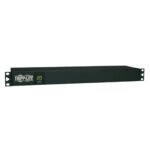Ethernet Cable Speeds Explained: Find the Best Cable for Your Network

Choosing the right Ethernet cable can make a huge difference in the speed and performance of your network. Whether you’re setting up a home network or managing a business in New York, understanding Ethernet cable speeds is crucial to ensuring smooth internet connectivity. With various options like Cat6 Plenum 1000ft Cable, Cat6 Bare Copper, and others, it can get confusing. So, how do you find the best cable for your needs? This blog will break down Ethernet cable speeds, explain different cable categories, and help you choose the best one for your network.
What Are Ethernet Cable Categories?
Ethernet cables are grouped into different categories, each offering various performance levels. These categories help you figure out which cable is suitable for different networking needs. From Cat5e to Cat8, each step up brings improvements in data speed, bandwidth, and shielding.
For most people and businesses, Cat6 Plenum Cable is a popular choice. It offers an excellent balance between performance and affordability. But what’s the real difference between these categories?
Cat5e vs. Cat6: What’s the Difference?
While Cat5e cables are cheaper, they max out at 1 Gbps (Gigabits per second). For everyday use, they get the job done but may fall short if you’re working with large data transfers or want a faster, more future-proof setup.
On the other hand, Cat6 Plenum cables are designed for higher speeds, offering up to 10 Gbps over short distances (up to 55 meters). This makes Cat6 Plenum 1000ft Cable a great choice if you’re looking to set up a fast, reliable network, whether at home or in an office setting. Cat6 Solid cables are often preferred in structured wiring setups for better performance and durability.
Why Choose Cat6 Plenum Cables?
One of the key reasons to go for Cat6 Plenum Cable is its fire-resistant jacket. If you’re installing cables in the ceilings or walls of a building, plenum-rated cables are required by law in many areas, including parts of New York. This is because they emit fewer toxic fumes in case of a fire, making them safer in enclosed spaces.
Plenum cables also offer better insulation, reducing crosstalk (the interference between cables). This results in a more stable connection, especially in environments with multiple cables close together. It’s no surprise that Cat6 Copper cables are a top choice for both businesses and home users who want a secure, high-speed network.
Understanding Ethernet Cable Speeds
Now, let’s talk about cable speeds. The speed at which your Ethernet cable transmits data is measured in megabits or gigabits per second (Mbps or Gbps). Here’s a breakdown of what you can expect from different types of cables:
- Cat5e: Up to 1 Gbps at 100 meters
- Cat6: Up to 10 Gbps at 55 meters
- Cat6a: Up to 10 Gbps at 100 meters
- Cat7: Up to 10 Gbps at 100 meters
- Cat8: Up to 40 Gbps at 30 meters
For most home and office networks, Cat6 Plenum 1000ft cables offer more than enough speed. However, if you’re working with heavy data tasks or running a data center, Cat7 or Cat8 might be worth considering.
The Role of Cat6 Bare Copper in Network Performance
Another factor to consider when choosing your Ethernet cable is the material used for the conductors. Cat6 Bare Copper cables are considered the gold standard in the networking world. Unlike cheaper alternatives like copper-clad aluminum (CCA), bare copper offers superior conductivity and durability. This ensures better performance over longer distances and in more demanding environments.
Additionally, White Cat6 Bare 1000ft cables are often used in scenarios where aesthetics matter, such as modern office spaces. These cables blend well with the surroundings, providing high performance without compromising the look of your space.
Shielding: Do You Need It?
Shielding is another important aspect to consider, especially if you’re setting up a network in an environment with a lot of electromagnetic interference (EMI). This could include areas near large machinery or electrical wiring.
Cat6 Solid Copper cables with shielding are a great option in these scenarios. They have an additional layer of protection that helps reduce interference, ensuring that your data flows smoothly. This feature is crucial for environments where performance and reliability cannot be compromised.
How to Choose the Right Ethernet Cable?
When deciding which Ethernet cable is right for you, consider the following factors:
Speed Needs: Are you working with high-speed internet and large file transfers? If so, Cat6 Plenum Cable is a good option. If you’re just browsing the web or streaming content, a Cat5e cable may suffice.
Distance: Ethernet cables lose performance over long distances. For instance, Cat6 works best up to 55 meters for maximum speeds, while Cat6a can handle longer runs up to 100 meters without slowing down.
Environment: For installations in plenum spaces, using plenum cables is essential for safety reasons. These cables are designed to resist fire and emit fewer toxic fumes, making them a must in places like hospitals, schools, and commercial buildings.
Interference: If you’re setting up a network in an area with a lot of interference, a shielded cable like Cat6 Copper will provide the best performance.
Conclusion
Choosing the right Ethernet cable is key to ensuring a fast, reliable network. For most users, Cat6 Plenum 1000ft Cable provides a great balance between speed, safety, and cost-effectiveness. Whether you’re wiring a small home network or a large office, it’s essential to consider factors like speed, distance, and the environment before making your decision.
By investing in high-quality cables like Cat6 Bare Copper or Cat6 Solid, you’re setting up your network for long-term success. And remember, using the right cable now can save you a lot of headaches later, especially if you plan on upgrading your internet speeds or network equipment down the line.
For those in New York, Monk Cables offers a wide range of Ethernet solutions to suit your needs. Whether you’re a homeowner, business owner, or network installer, choosing the right cable is the first step toward a faster, more reliable internet connection.






